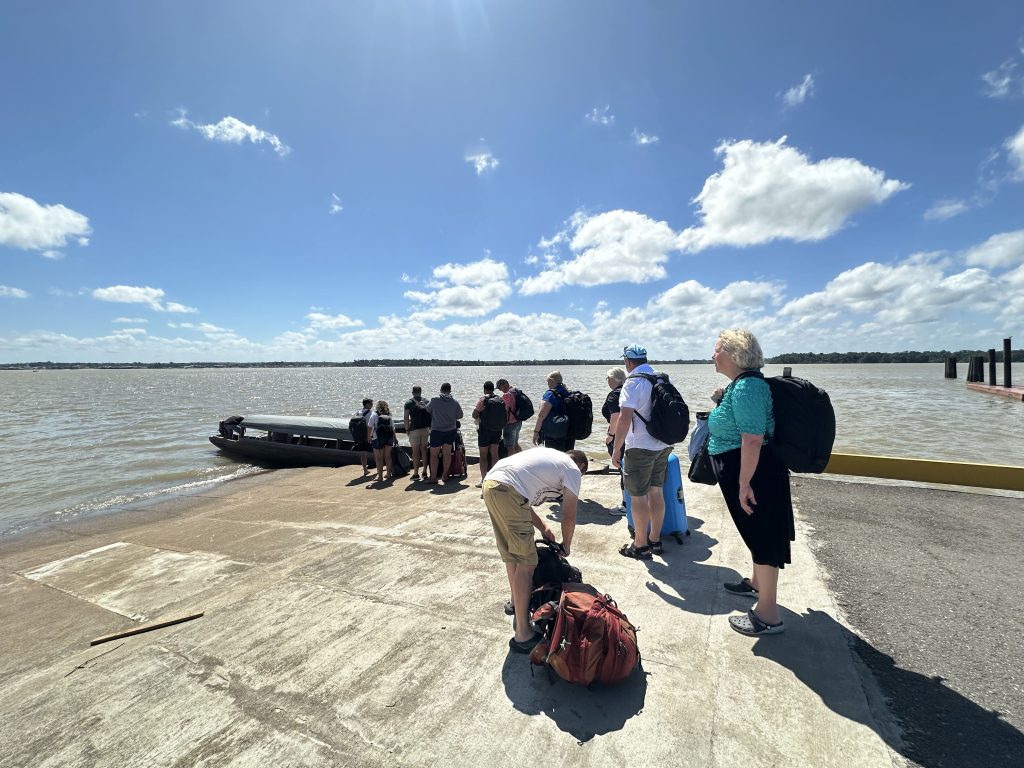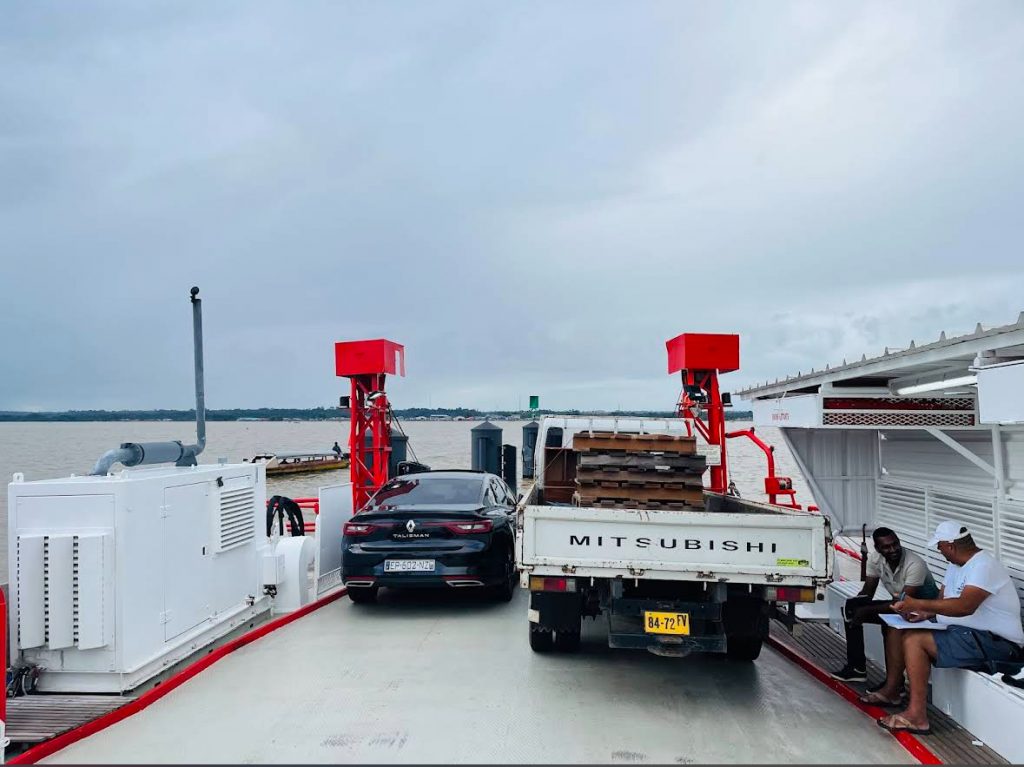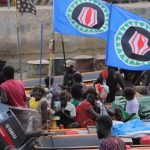Now that you know how to cross from Guyana to Suriname, let’s explore the Suriname–French Guiana border.
This stretch of the Maroni River, called Marowijne in Suriname, has connected communities for generations. Indigenous peoples, Maroon groups, and traders have long used it as a route.
The official boundary was formalized relatively recently: France and Suriname signed an agreement in March 2021, reaffirming the border along more than 400 km of the river basin. Today, it links towns and people. There is no bridge connecting Suriname and French Guiana, so the river is the only way across.

Table of Contents
The Border
The Maroni flows north from the Tumuk Humak Mountains, forming the border between Suriname on the west and French Guiana on the east. Along different sections, it’s also called the Litani or Lawa.
On the Suriname side is Albina, a small town founded in 1846 and named after the founder’s wife. Originally established as a trading post, Albina grew as a gateway to French Guiana, serving traders, travellers, and river traffic.
Across the river, Saint Laurent du Maroni carries the weight of its colonial past. The town was once the administrative center for France’s notorious penal system in South America. Thousands of prisoners passed through its Camp de la Transportation before being sent to the infamous Devil’s Island and other nearby camps.
The river is constantly shifting its currents, colour, and depth change with the season. Gold mining upstream often clouds the water with sediment, giving the Maroni a muddy hue and sometimes making navigation unpredictable.

Getting to Suriname & Albina
The main airport of Suriname is Johan Adolf Pengel International Airport (PBM), located about 1–1.5 hours from central Paramaribo. Direct flights come from the Netherlands, Guyana, Panama, Brazil, Curaçao, and Trinidad and Tobago.
From Paramaribo, Albina is about 175 km east. Shared taxis or minibuses usually leave around 4–5 a.m., taking 3.5–4 hours depending on traffic and road conditions. The fare is around €25 per person. Many hotels can assist you in booking a trusted driver.
Private car hire is the most comfortable and flexible way to make the trip, letting you travel at your own pace.
Allow extra time; border checks and the river crossing can take longer than expected.
Ferry Crossing: Albina – Saint Laurent

The border post is open Monday to Friday from 8 a.m. to 6 p.m. On Saturdays, Sundays, and public holidays (following the Surinamese calendar), it operates from 8 a.m. to 3 p.m. Travelers should plan their crossing within these hours to avoid delays or missed services.
The river crossing takes about 15 minutes. BAC International La Gabrielle runs regular departures, but smaller canoes, pirogues, or local boats are also options if schedules are tight. A one-way ticket for pedestrians costs about €5.
Arrive 30–45 minutes early to buy your ticket and complete border formalities.
Ferry schedules can change due to tides, weather, or maintenance, so always check ahead. Bring cash and try to board early for a good spot.
On the Suriname side, you’ll need an exit stamp and the ICF Departure Form: icf.sr/form-departure. (Same form you need to fill in when entering Suriname).
On the French Guiana side, carry your passport and, if required, a visa or tourist card. For the latest visa requirements, check france-visas.gouv.fr.
Arrival in Saint Laurent & Onwards
In Saint‑Laurent‑du‑Maroni, all travelers go through immigration and customs. If you’re from a European country, the process is usually straightforward, and no short-stay visa is required. From there, you can continue onward to Cayenne by road, a trip of about 1.5–2 hours.
Shared vans, minibuses, and taxis are available right at the riverfront terminal, with fares typically around €25–30 per person.
If staying in town, explore the former penal colony, walk the riverside promenade, and enjoy the mix of Indigenous, Maroon, and Creole cultures.



Conclusion
Travel early, shared taxis and minibuses usually leave Paramaribo around 4–5 a.m., and hotels can help book trusted drivers. Bring cash, as boats and taxis rarely accept cards.
A passport valid for at least six months, any required visas or tourist cards, and yellow fever vaccination proof are essential.
Arrive 30–45 minutes early at the ferry terminal with your ICF Departure Form and passport.
If the main ferry isn’t running, smaller canoes or pirogues are good alternatives. Ferry schedules can shift due to tides, weather, or maintenance, and onward travel from Saint Laurent may be limited, so plan ahead. Allow extra time for customs, missed transport, or river delays.
Click to check our Guyanas Tour.





